Texas is home to some of the most unique and diverse species of turtles in North America. From the large Alligator Snapping Turtle to the tiny Texas Spiny Softshell Turtle, these reptiles are an integral part of Texas’s natural history.
With a wide range of habitats from swamps to rivers, lakes, and even dry land, native turtles can be found all across the Lone Star State. While not as flashy or well-known as other animals like birds or mammals, these turtles play an important role in their ecosystems that should not be overlooked.
In this article, we’ll explore some of the different types of native turtle species found in Texas and discuss why they are so important to our environment.
1. Alligator Snapping Turtle (Macroclemys temminckii)
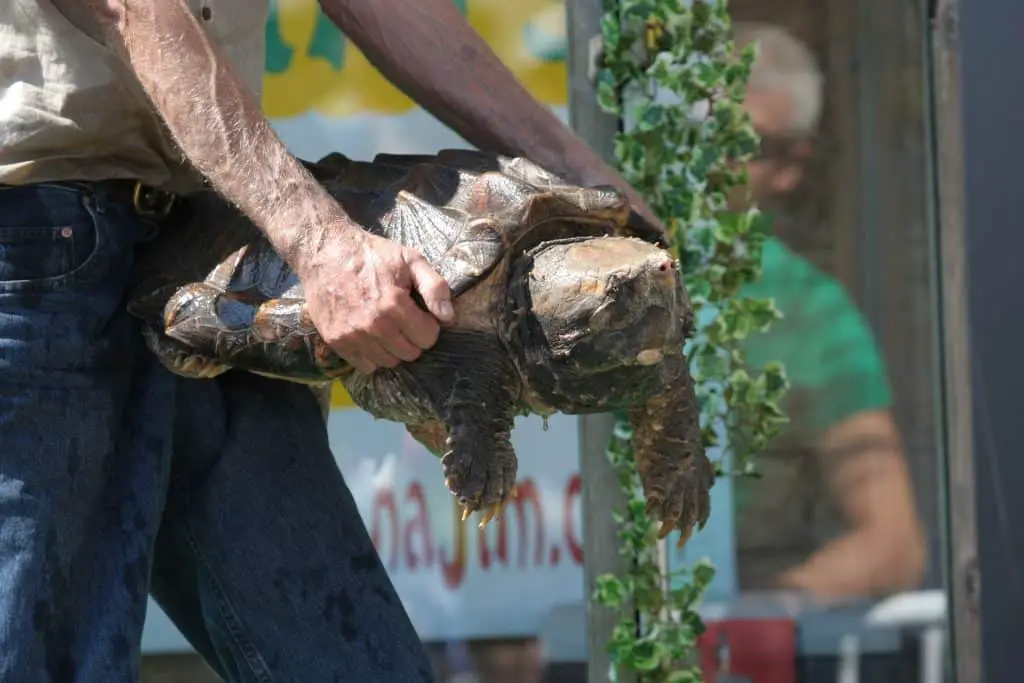
The Alligator Snapping Turtle is a large and distinct species of turtle found in freshwater rivers, lakes, and swamps throughout Texas. It is the largest freshwater turtle in North America, with an average weight of around 35 pounds and reaching up to 80 pounds! This impressive creature has an elongated neck and a long tail that it uses for swimming. Its shell is covered in small bumps and grooves that give it a unique texture. The head features three yellow eyespots surrounded by spines which make this reptile appear quite intimidating.
Habitat of Alligator Snapping Turtle
Alligator Snapping Turtles primarily inhabit large, slow-moving rivers and can be found submerged in the mud at the bottom. They are also occasionally found in small pools or ponds where they find plenty of aquatic vegetation to feed on.
Diet of Alligator Snapping Turtle
The Alligator Snapping Turtle is an opportunistic omnivore, meaning they eat just about anything it can find. They feed on worms, snails, small fish, and amphibians, as well as aquatic vegetation like algae and duckweed.
Reproduction and Life Cycle of Alligator Snapping Turtle
The Alligator Snapping Turtle is a long-lived species and can live up to 100 years! It reaches sexual maturity between 8-10 years old. During the breeding season, which occurs in spring and summer, males will engage in fierce competition with females. The female then digs a nest on land and lays between 20-50 eggs that hatch about two months later.
Conservation Status and Protection of the Alligator Snapping Turtle
The Alligator Snapping Turtle is listed as a species of least concern by the IUCN, however, they are still at risk due to habitat loss and illegal collection. The Texas Parks and Wildlife Department has imposed regulations on the commercial harvest and sale of alligator snapping turtles, so be sure to check with your local authorities before collecting one. With proper conservation efforts, these majestic reptiles can continue to thrive in Texas for many years to come.
2. Big Bend Mud Turtle (Kinosternon hirtipes murrayi)
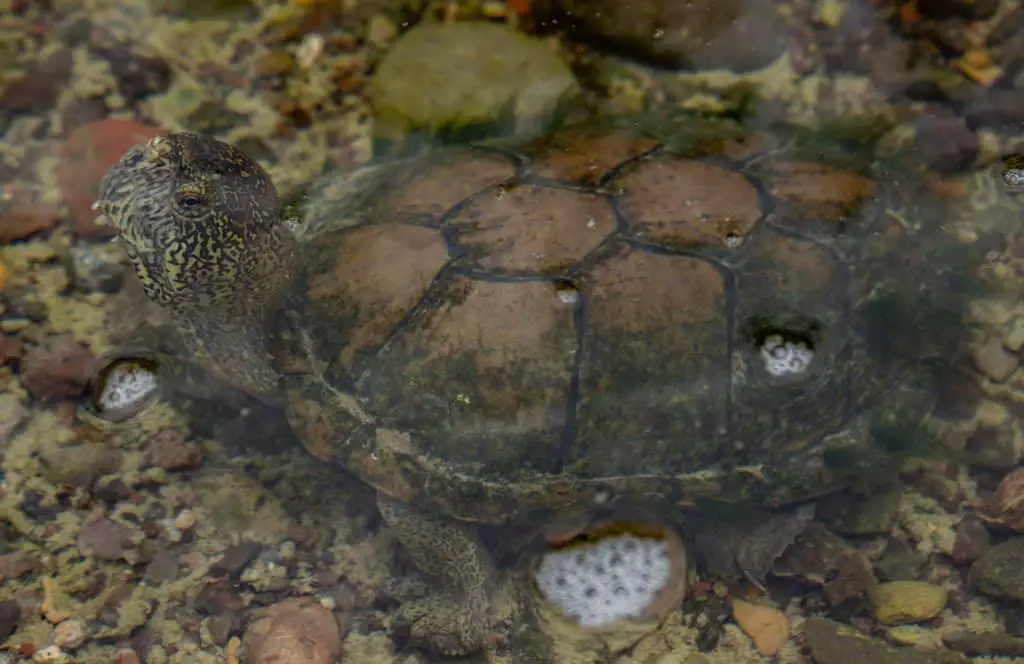
The Big Bend Mud Turtle is a small, freshwater species of turtle found in the Rio Grande River drainage basin. It has a distinctively patterned carapace (shell) which can be reddish-brown to black in color and often features yellow or white spots.
Habitat of Big Bend Mud Turtle
The Big Bend Mud Turtle is typically found in small, shallow streams and rivers with slow-moving water. They tend to prefer areas with rocky and sandy bottoms that provide good cover from predators.
Diet of Big Bend Mud Turtle
Big Bend Mud Turtles are primarily carnivorous, feeding on aquatic insects, crustaceans, small fish, and amphibians. They will occasionally also consume algae or aquatic vegetation if available.
Reproduction and Life Cycle of the Big Bend Mud Turtle
Big Bend Mud Turtles reach sexual maturity around 6-7 years old and can live up to 25 years in the wild. They breed in spring and females will dig a nest on land to lay 1-10 eggs that hatch in late summer or early fall.
Conservation Status and Protection of the Big Bend Mud Turtle
The Big Bend Mud Turtle is considered threatened in Texas and listed as a species of special concern by the IUCN. Efforts are being made to protect this species from habitat destruction, illegal collection, and pollution due to human activities. It is important for people to be aware of these turtles’ needs and take action to help conserve them.
3. Big Bend Slider (Trachemys gaigeae)

The Big Bend Slider is a medium-sized, semi-aquatic turtle found in the Rio Grande River basin of Texas. It has an olive green to the yellowish brown carapace (shell) and light yellow stripes along its neck, limbs, and tail. The head features two orange stripes that run from each eye to the back of the neck.
Habitat of Big Bend Slider
Big Bend Sliders are typically found in shallow streams with moderate currents and plenty of submerged vegetation for them to hide amongst. They can also be found in ponds, marshes, lakes, or other areas where there is an abundance of aquatic plants and invertebrates for them to feed on.
Diet of Big Bend Slider
Big Bend Sliders are omnivorous, meaning they will feed on both plant and animal matter. They primarily consume aquatic insects, crustaceans, small fish and amphibians, as well as aquatic vegetation like algae and duckweed.
Reproduction and Life Cycle of Big Bend Slider
Big Bend Sliders reach sexual maturity at around 4-6 years old and can live up to 20 years in the wild. Breeding usually occurs from spring to early summer and females will lay between 2-24 eggs which hatch about two months later.
4. Cagle’s Map Turtle (Graptemys caglei)
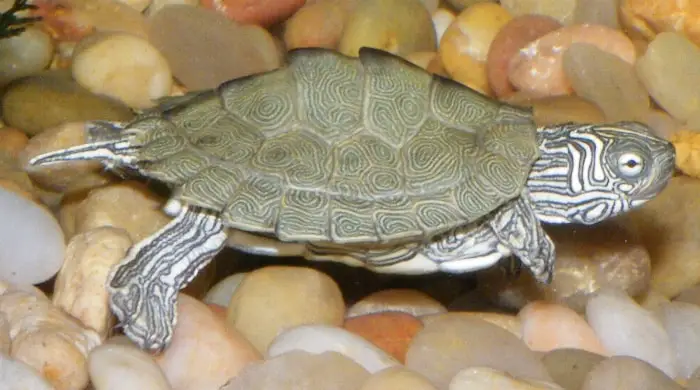
The Cagle’s Map Turtle is a medium-sized, freshwater species of turtle found in the Brazos River drainage basin. It has a dark brown shell that may feature yellow to orange stripes along its margins and yellow spots over its body. Its head features an intricate pattern of yellow lines which give it a “map-like” appearance.
Habitat of Cagle’s Map Turtle
Cagle’s Map Turtles are typically found in large rivers with strong currents and plenty of aquatic vegetation for them to hide amongst. They can also be found in ponds, marshes, lakes and other areas where there is an abundance of food sources like insects, fish, crustaceans and amphibians.
Diet of Cagle’s Map Turtle
Cagle’s Map Turtles are primarily carnivorous, meaning they feed on animals rather than plants. They typically consume aquatic insects, crustaceans, small fish and amphibians. They will occasionally also consume algae or aquatic vegetation if available.
Reproduction and Life Cycle of the Cagle’s Map Turtle
Cagle’s Map Turtles reach sexual maturity around 8-10 years old and can live up to 30 years in the wild. Breeding usually occurs in spring and females will lay 1-20 eggs that hatch in late summer or early fall.
Conservation Status and Protection of the Cagle’s Map Turtle
The Cagle’s Map Turtle is considered threatened in Texas due to habitat loss, pollution and illegal collection. Thus, proper conservation efforts are necessary to protect this species from further decline. The U.S. Fish and Wildlife Service has listed the Cagle’s Map Turtle as a threatened species and it is protected under the Endangered Species Act (ESA) of 1973. With these efforts, this species can continue to thrive in Texas for many years to come.
5. Common Musk Turtle (Stinkpot) Sternotherus odoratus
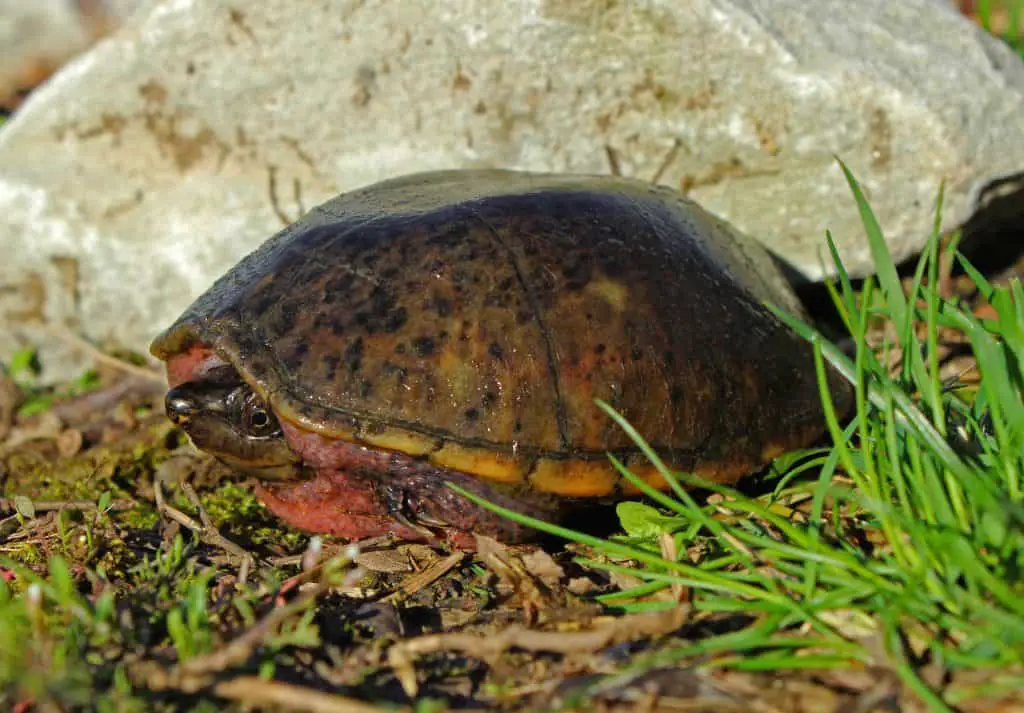
The Common Musk Turtle is a small freshwater species of turtle found in the southeastern United States. It has a dark brown to black shell with yellowish-brown streaks along its sides and a yellow spot behind each eye. Its head features an intricate pattern of yellow lines which give it a “map-like” appearance.
Habitat of Common Musk Turtle
Common Musk Turtles are typically found in large rivers, lakes and ponds with slow to moderate currents and plenty of aquatic vegetation for them to hide amongst. They can also be found in marshes, swamps or other areas where there is an abundance of food sources like insects, fish, crustaceans and amphibians.
Diet of Common Musk Turtle
Common Musk Turtles are primarily carnivorous, meaning they feed on animals rather than plants. They typically consume aquatic insects, crustaceans, small fish and amphibians. They will occasionally also consume algae or aquatic vegetation if available.
Reproduction and Life Cycle of the Common Musk Turtle
Common Musk Turtles reach sexual maturity around 6-8 years old and can live up to 30 years in the wild. Breeding usually occurs from spring to early summer and females will lay 1-3 eggs that hatch in late summer or early fall.
Conservation Status and Protection of the Common Musk Turtle
The Common Musk Turtle is considered threatened due to habitat loss, pollution, illegal collection and overharvesting for commercial use.
6. Common Snapping Turtle (Chelydra serpentina serpentina)

The Common Snapping Turtle is a large freshwater species of turtle found throughout the eastern United States. It has a dark brown to black shell with bright yellow spots along its margins and jagged edges around its carapace. Its head features an intricate pattern of yellow lines which give it a “map-like” appearance.
Habitat of Common Snapping Turtle
Common Snapping Turtles are typically found in slow-moving streams, rivers, lakes and ponds with plenty of aquatic vegetation for them to hide amongst. They can also be found in marshes, swamps or other areas where there is an abundance of food sources like insects, fish, crustaceans and amphibians.
Diet of Common Snapping Turtle
Common Snapping Turtles are primarily carnivorous, meaning they feed on animals rather than plants. They typically consume aquatic insects, crustaceans, small fish and amphibians. They will occasionally also consume algae or aquatic vegetation if available.
Reproduction and Life Cycle of the Common Snapping Turtle
Common Snapping Turtles reach sexual maturity around 8-10 years old and can live up to 30 years in the wild. Breeding usually occurs from late spring to early summer and females will lay 1-20 eggs that hatch in late summer or early fall.
7. Desert Box Turtle (Terrapene ornata luteola)
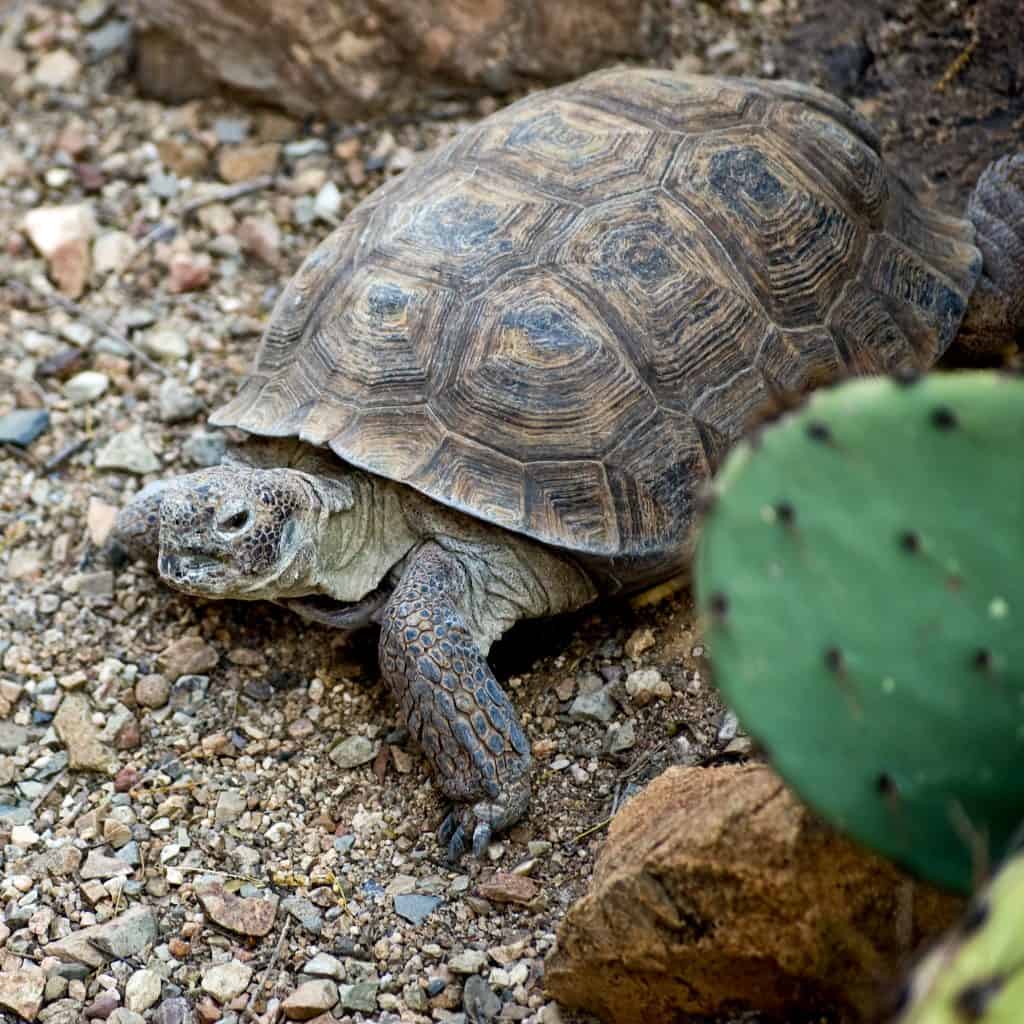
The Desert Box Turtle is a small species of turtle native to the southwestern United States. It has an olive-colored shell with yellow and black stripes along its sides and a yellow spot behind each eye. Its head features an intricate pattern of yellow lines which give it a “map-like” appearance.
Habitat of Desert Box Turtle
Desert Box Turtles are typically found in dry, arid regions with sandy soil or sparse vegetation like deserts and rocky hillsides. They can also be found in grasslands, meadows or other areas where there is an abundance of food sources like insects, worms and small vertebrates.
Diet of Desert Box Turtle
Desert Box Turtles are omnivorous, meaning they feed on both animals and plants. They typically consume a variety of insects, worms, small vertebrates, and fruits or vegetables if available.
Reproduction and Life Cycle of the Desert Box Turtle
Desert Box Turtles reach sexual maturity around 4-7 years old and can live up to 30 years in the wild. Breeding usually occurs from spring to early summer and females will lay 1-3 eggs that hatch in late summer or early fall.
8. Guadalupe Spiny Softshell (Apalone spinifera guadalupensis)
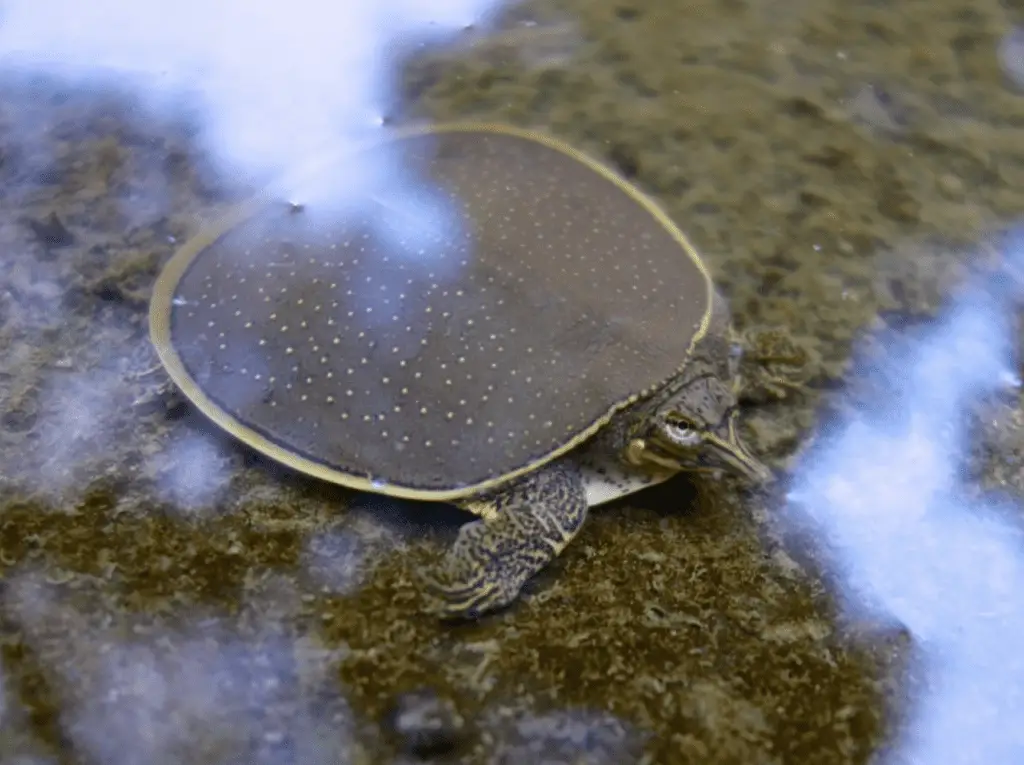
The Guadalupe Spiny Softshell is a small species of freshwater turtle native to the southwestern United States. It has a light-colored shell with dark blotches and spines along its sides and a yellow spot behind each eye. Its head features an intricate pattern of yellow lines which gi
Habitat of Guadalupe Spiny Softshell
Guadalupe Spiny Softshells are typically found in rivers, streams, ponds and lakes with slow-moving water. They prefer habitats with plenty of submerged vegetation, rocks or logs to hide under during the day.
Diet of Guadalupe Spiny Softshell
Guadalupe Spiny Softshells are carnivorous, meaning they feed on animals. They typically consume insects, worms, fish, crustaceans and mollusks. They will occasionally also consume aquatic vegetation if available.
Reproduction and Life Cycle of the Guadalupe Spiny Softshell
Guadalupe Spiny Softshells reach sexual maturity around 5-7 years old and can live up to 50 years in the wild. Breeding usually occurs in late spring or early summer and females will lay 1-3 eggs that hatch in late summer or early fall.
9. Midland Smooth Softshell (Apalone mutica mutica)
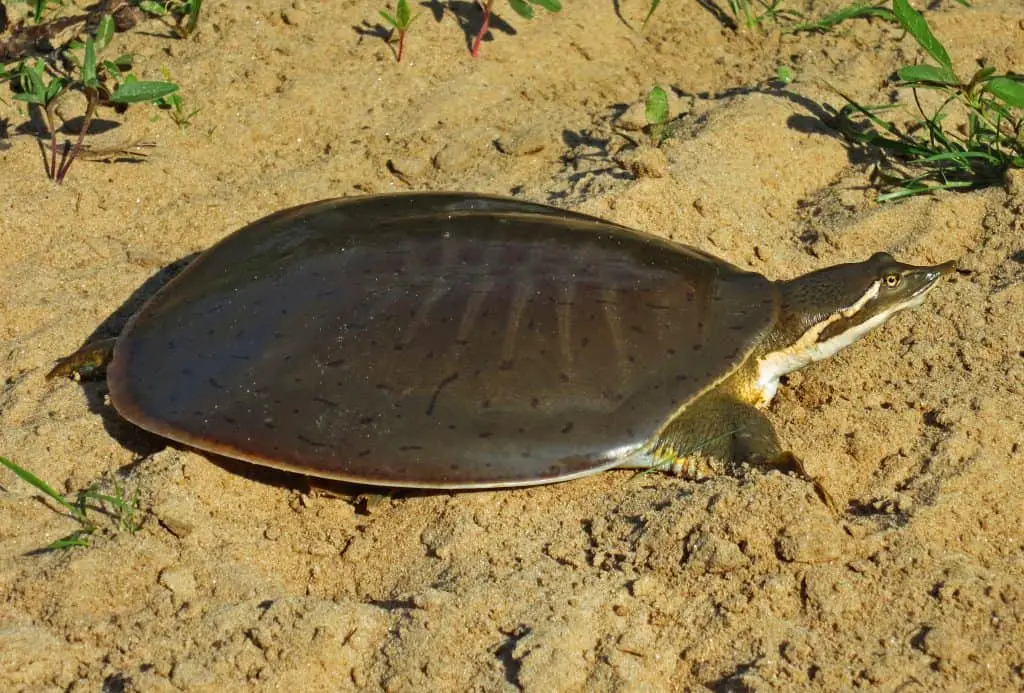
The Midland Smooth Softshell turtles are a type of turtle with a soft shell. They have smooth, dark shells and can grow to be quite large. Their heads and necks can be tan or brown in color.
Habitat of Midland Smooth Softshell
Midland Smooth Softshells are typically found in rivers, streams, ponds and lakes with slow-moving water. They prefer habitats with plenty of submerged vegetation, rocks, or logs to hide under during the day.
Diet of Midland Smooth Softshell
Midland Smooth Softshells are omnivorous, meaning they feed on both plants and animals. They typically consume insects, worms, small vertebrates, aquatic vegetation and fruits or vegetables if available.
Reproduction and Life Cycle of the Midland Smooth Softshell
Midland Smooth Softshells reach sexual maturity around 6-7 years old and can live up to 25 years in the wild. Breeding usually occurs from spring to early summer and females will lay 1-9 eggs that hatch in late summer or early fall.
10. Mississippi Map Turtle (Graptemys pseudogeographica kohnii)
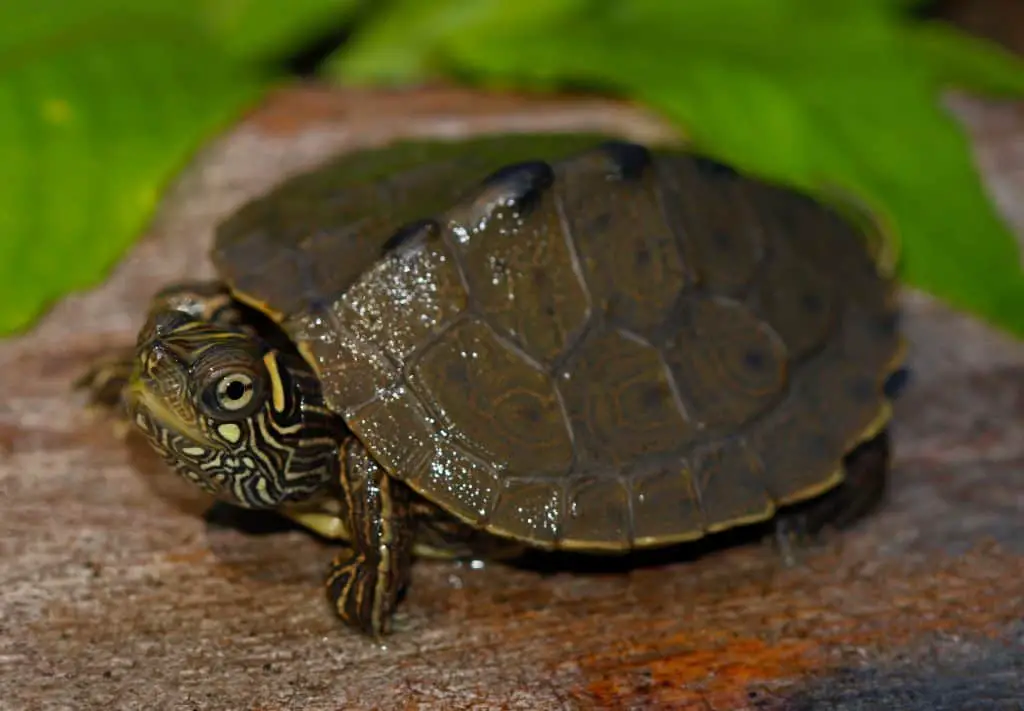
The Mississippi Map Turtle is a medium-sized species of freshwater turtle native to the southeastern United States. It has a dark-colored shell with yellow and brown markings along its sides and a distinct pattern of yellow lines on its head that resemble a map.
Habitat of Mississippi Map Turtle
Mississippi Map Turtles are typically found in rivers, streams, ponds and lakes with slow-moving water. They prefer habitats with plenty of submerged vegetation, rocks or logs to hide under during the day.
Diet of Mississippi Map Turtle
Mississippi Map Turtles are omnivorous, meaning they feed on both plants and animals. They typically consume insects, worms, small vertebrates, aquatic vegetation and fruits or vegetables if available.
Reproduction and Life Cycle of the Mississippi Map Turtle
Mississippi Map Turtles reach sexual maturity around 5-7 years old and can live up to 50 years in the wild. Breeding usually occurs in late spring or early summer and females will lay 1-9 eggs that hatch in late summer or early fall.
11. Mississippi Mud Turtle (Kinosternon subrubrum hippocrepis)
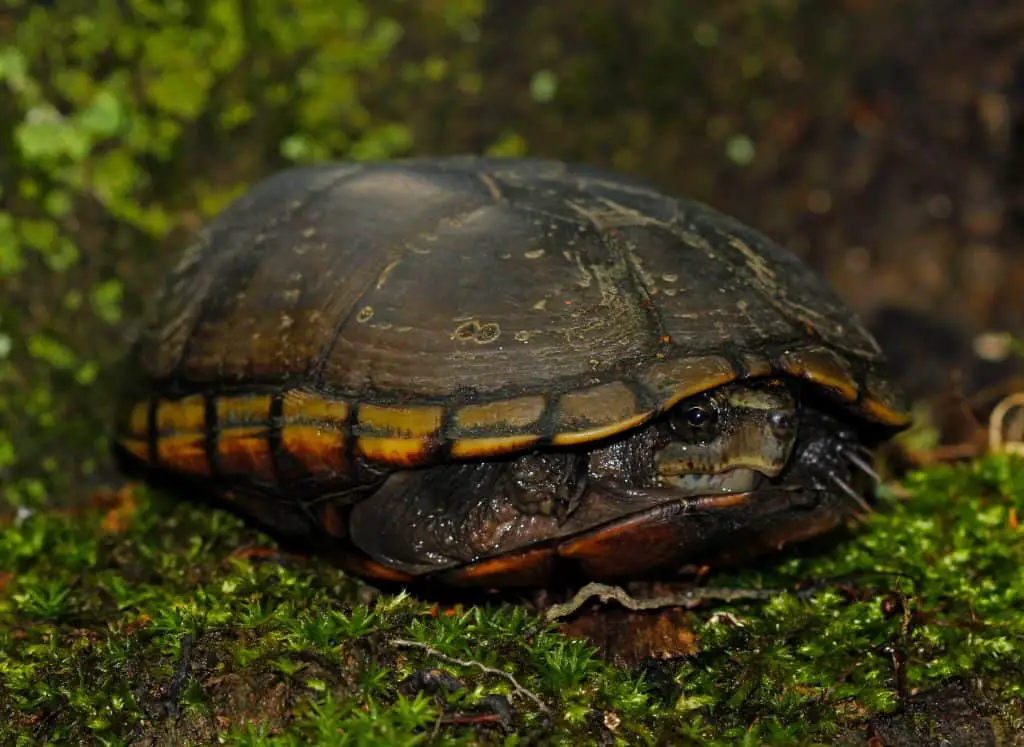
The Mississippi Mud Turtle is a small-sized species of freshwater turtle native to the southeastern United States. It has a dark-brown shell with yellow or white markings along its sides and a distinct pattern of black lines on its head that resemble a maze.
Habitat of Mississippi Mud Turtle
Mississippi Mud Turtles are typically found in rivers, streams, ponds and lakes with slow-moving water. They prefer habitats with plenty of submerged vegetation, rocks or logs to hide under during the day.
Diet of Mississippi Mud Turtle
Mississippi Mud Turtles are omnivorous, meaning they feed on both plants and animals. They typically consume insects, worms, small vertebrates, aquatic vegetation and fruits or vegetables if available.
Reproduction and Life Cycle of the Mississippi Mud Turtle
Mississippi Mud Turtles reach sexual maturity around 6-7 years old and can live up to 20 years in the wild. Breeding usually occurs from spring to early summer and females will lay 1-6 eggs that hatch in late summer or early fall.
12. Missouri River Cooter (Pseudemys concinna metteri)
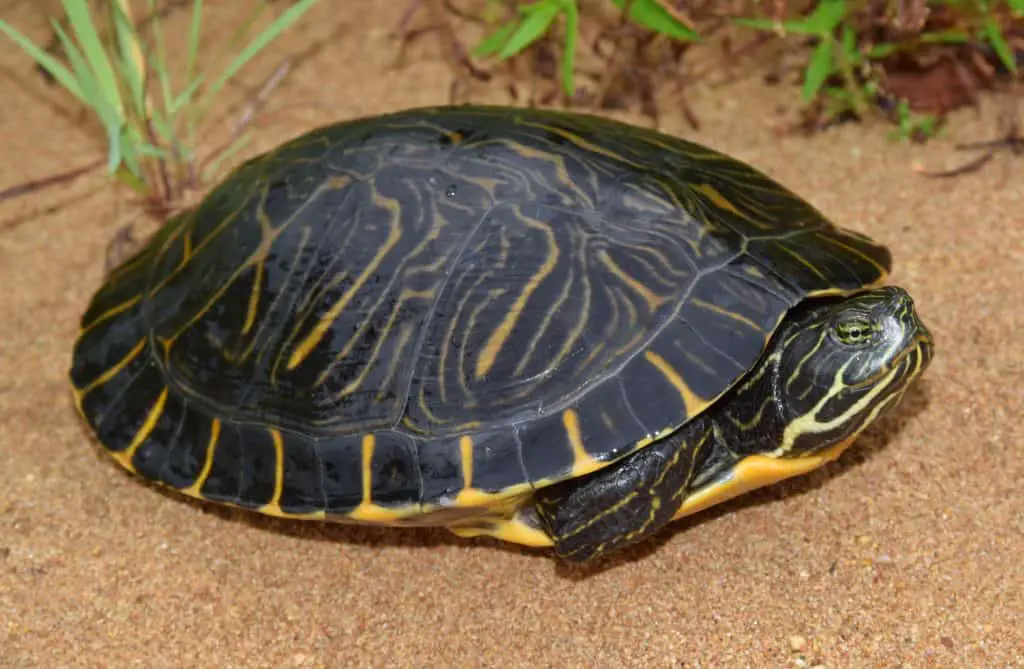
The Missouri River Cooter is a medium-sized species of freshwater turtle native to the southeastern and midwestern United States. It has a dark-colored shell with yellow or red markings along its sides and a distinct pattern of black lines on its head that resemble a maze.
Habitat of Missouri River Cooter
Missouri River Cooters are typically found in rivers, streams, ponds and lakes with slow-moving water. They prefer habitats with plenty of submerged vegetation, rocks or logs to hide under during the day.
Diet of Missouri River Cooter
Missouri River Cooters are omnivorous, meaning they feed on both plants and animals. They typically consume insects, worms, small vertebrates, aquatic vegetation and fruits or vegetables if available.
Reproduction and Life Cycle of the Missouri River Cooter
Missouri River Cooters reach sexual maturity around 4-5 years old and can live up to 50 years in the wild. Breeding usually occurs from spring to early summer and females will lay 2-6 eggs that hatch in late summer or early fall.
13. Ornate Box Turtle (Terrapene ornata)
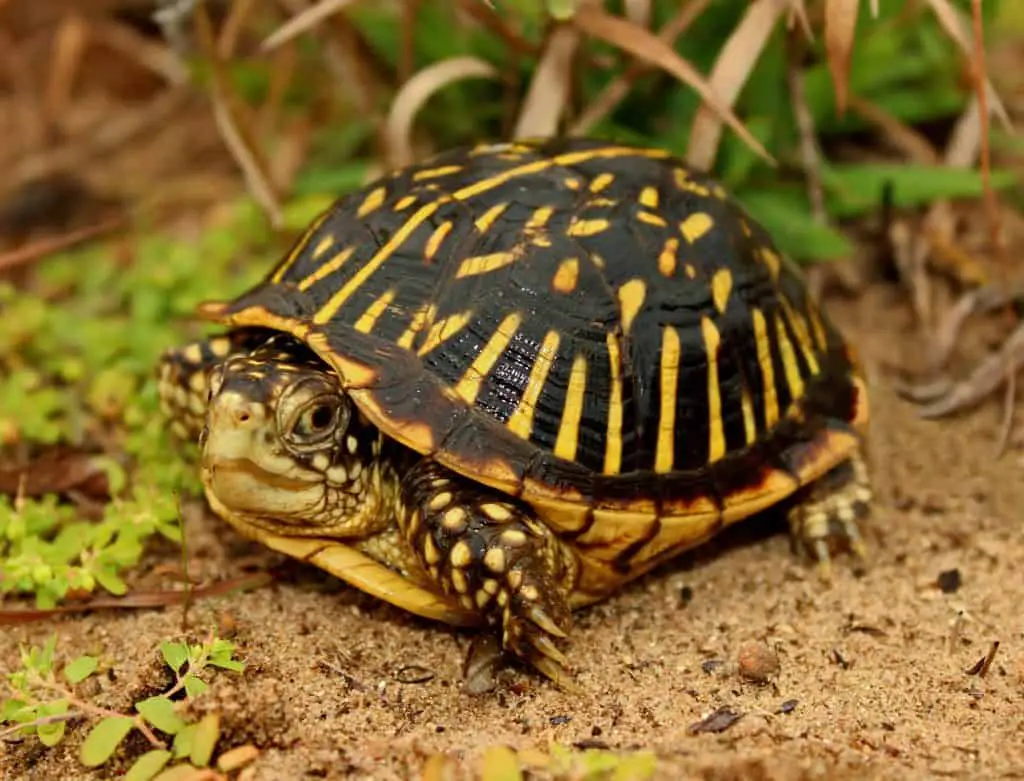
The Ornate Box Turtle is a small-sized species of terrestrial turtle native to the central and southwestern United States. It has a yellow, brown, orange or black shell with yellow or white markings along its sides and a distinctive pattern of dark lines on its head.
Habitat of Ornate Box Turtle
Ornate Box Turtles are typically found in grasslands, open woodlands, prairies and deserts with plenty of vegetation for hiding during the day. They prefer habitats with loose soil to dig their burrows and hibernate in during the winter months.
Diet of Ornate Box Turtle
Ornate Box Turtles are omnivorous, meaning they feed on both plants and animals. They typically consume insects, worms, small vertebrates, berries, and other fruits or vegetables if available.
Reproduction and Life Cycle of the Ornate Box Turtle
Ornate Box Turtles reach sexual maturity around 8-9 years old and can live up to 30 years in the wild. Breeding usually occurs from spring to early summer and females will lay 1-4 eggs that hatch in late summer or early fall.
14. Ouachita Map Turtle (Graptemys ouachitensis)
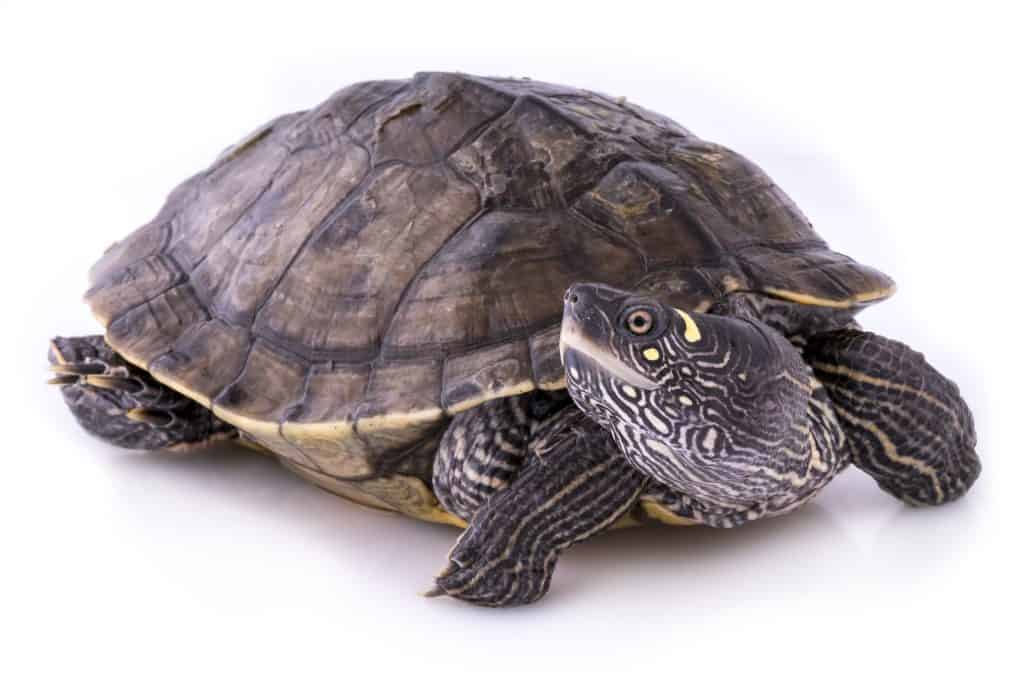
The Big Bend Mud Turtle is a small-sized species of freshwater turtle native to the southeastern United States. It has a dark-colored shell with yellow or orange markings along its sides and a distinctive pattern of yellow lines on its head, resembling a map of the area it inhabits.
Habitat of the Big Bend Mud Turtle
Big Bend Mud Turtles are typically found in rivers, streams, ponds and lakes with slow-moving water. They prefer habitats with plenty of submerged vegetation, rocks or logs to hide under during the day.
Diet of Big Bend Mud Turtle
Big Bend Mud Turtles are omnivorous, meaning they feed on both plants and animals. They typically consume insects, worms, small vertebrates, aquatic vegetation and fruits or vegetables if available.
Reproduction and Life Cycle of the Big Bend Mud Turtle
Big Bend Mud Turtles reach sexual maturity around 4-5 years old and can live up to 50 years in the wild. Breeding usually occurs from spring to early summer and females will lay 1-11 eggs that hatch in late summer or early fall.
15. Pallid Spiny Softshell (Apalone spinifera pallida)
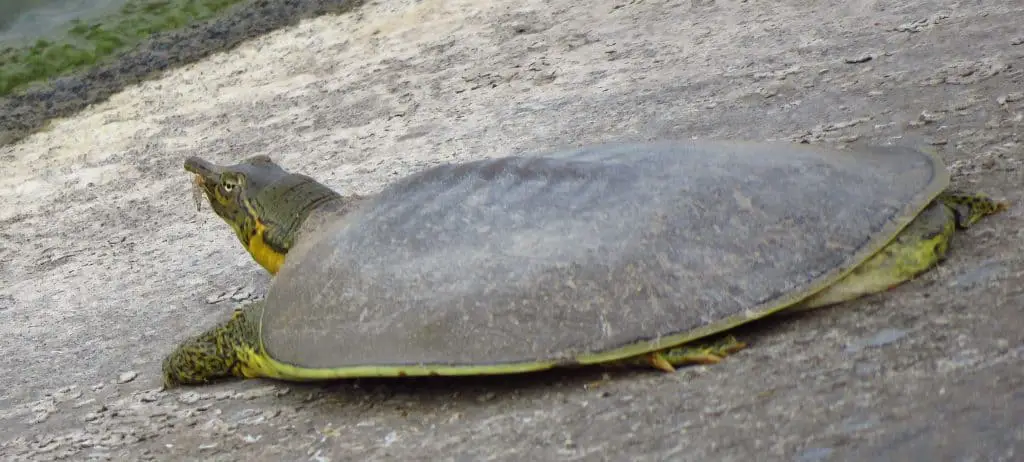
In Wikipedia.
The Pallid Spiny Softshell is a medium-sized species of aquatic turtle native to the central and southeastern United States. It has an olive green or brown, smooth shell with dark spots and yellow trim along its sides and a distinctive pattern of pale lines on its head.
Habitat of Pallid Spiny Softshell
Pallid Spiny Softshells are typically found in large rivers, oxbow lakes and backwaters with plenty of vegetation for basking in during the day. They prefer habitats with sandy bottoms to lay their eggs and hide under during the winter months.
Diet of Pallid Spiny Softshell
Pallid Spiny Softshells are omnivorous, meaning they feed on both plants and animals. They typically consume insects, worms, small vertebrates, aquatic vegetation and fruits or vegetables if available.
Reproduction and Life Cycle of the Pallid Spiny Softshell
Pallid Spiny Softshells reach sexual maturity around 4-5 years old and can live up to 10 years in the wild. Breeding usually occurs from spring to early summer and females will lay 2-12 eggs that hatch in late summer or early fall.
16. Razorback Musk Turtle (Sternotherus carinatus)
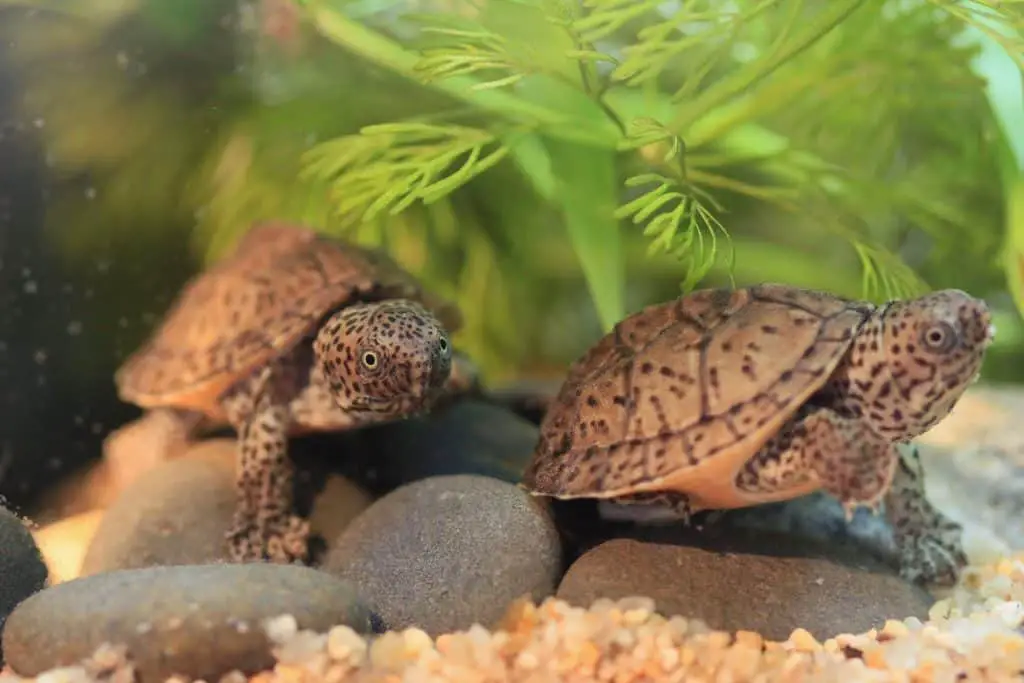
The Razorback Musk Turtle is a small-sized species of freshwater turtle native to the southeastern United States. It has a dark to brown -colored shell with yellow spots and distinctive pattern of light lines on its head resembling a map of the area it inhabits.
Habitat of Razorback Musk Turtle
Razorback Musk Turtles are typically found in rivers, streams, ponds and lakes with slow-moving water. They prefer habitats with plenty of submerged vegetation, rocks or logs to hide under during the day.
Diet of Razorback Musk Turtle
Razorback Musk Turtles are omnivorous, meaning they feed on both plants and animals. They typically consume insects, worms, small vertebrates, aquatic vegetation and fruits or vegetables if available.
Reproduction and Life Cycle of the Razorback Musk Turtle
Razorback Musk Turtles reach sexual maturity around 7-8 years old and can live up to 30 years in the wild. Breeding usually occurs from spring to early summer and females will lay 2-8 eggs that hatch in late summer or early fall.
17. Red-eared Slider Turtle (Trachemys scripta elegans)
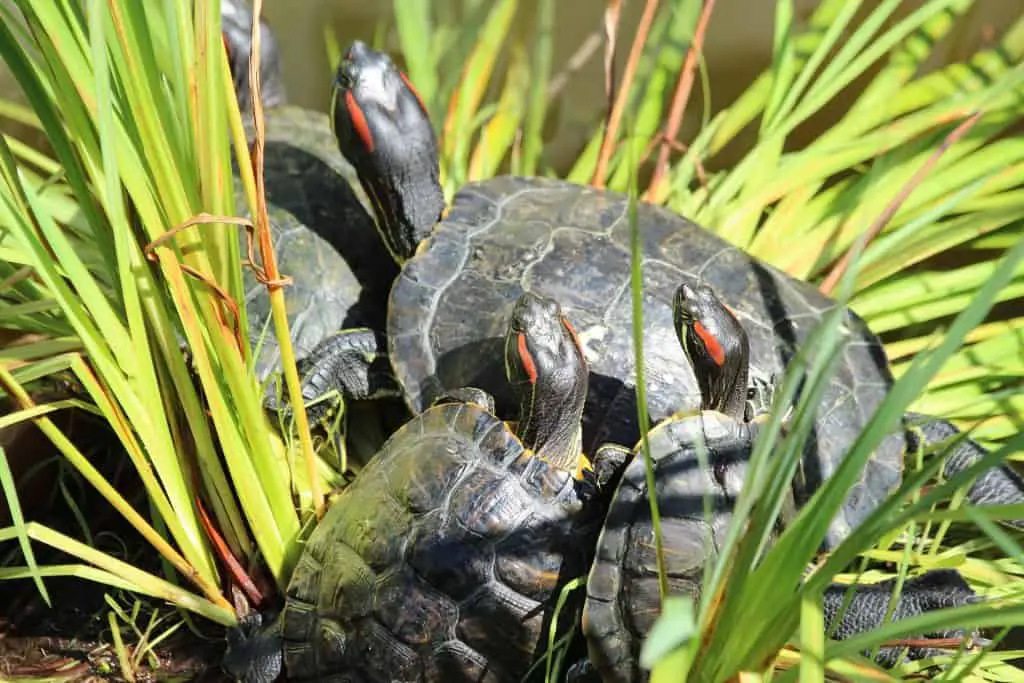
The Red-eared Slider is a medium-sized species of aquatic turtle native to the southeastern United States. It has a distinctive green and yellow shell with red stripes along its sides and a prominent mark on either side of its head that resembles an “ear”.
Habitat of Red-eared Slider
Red-eared Sliders are typically found in ponds, lakes, rivers, marshes and slow-moving streams. They prefer habitats with plenty of vegetation for basking in during the day as well as rocks or logs to hide under during the winter months.
Diet of Red-eared Slider
Red-eared Sliders are omnivorous, meaning they feed on both plants and animals. They typically consume insects, worms, small vertebrates, aquatic vegetation and fruits or vegetables if available.
Reproduction and Life Cycle of the Red-eared Slider
Red-eared Sliders reach sexual maturity around 5 years old and can live up to 20 years in the wild. Breeding usually occurs from spring to early summer and females will lay 3-8 eggs that hatch in late summer or early fall.
18. Rio Grande River Cooter (Pseudemys gorzugi)
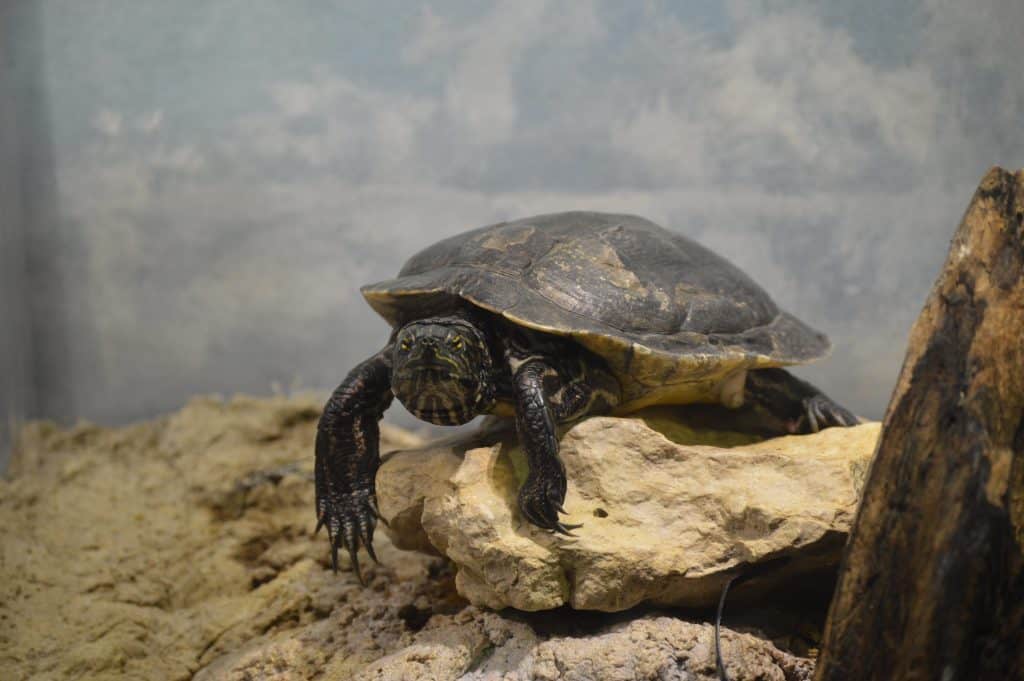
The Rio Grande River Cooter is a medium-sized species of aquatic turtle native to the southwestern United States. It has a distinctive olive or brown shell with yellow stripes along its sides and a prominent mark on either side of its head that resembles an “eye”.
Habitat of Rio Grande River Cooter
Rio Grande River Cooters are typically found in ponds, lakes, marshes, slow-moving streams and rivers. They prefer habitats with plenty of vegetation for basking in during the day as well as rocks or logs to hide under during the winter months.
Diet of Rio Grande River Cooter
Rio Grande River Cooters are omnivorous, meaning they feed on both plants and animals. They typically consume insects, worms, small vertebrates, aquatic vegetation and fruits or vegetables if available.
Reproduction and Life Cycle of the Rio Grande River Cooter
Rio Grande River Cooters reach sexual maturity around 5-8 years old and can live up to 25 years in the wild. Breeding usually occurs from spring to early summer and females will lay 3-15 eggs that hatch in late summer or early fall.
19. Sabine Map Turtle (Graptemys ouachitensis sabinensis)
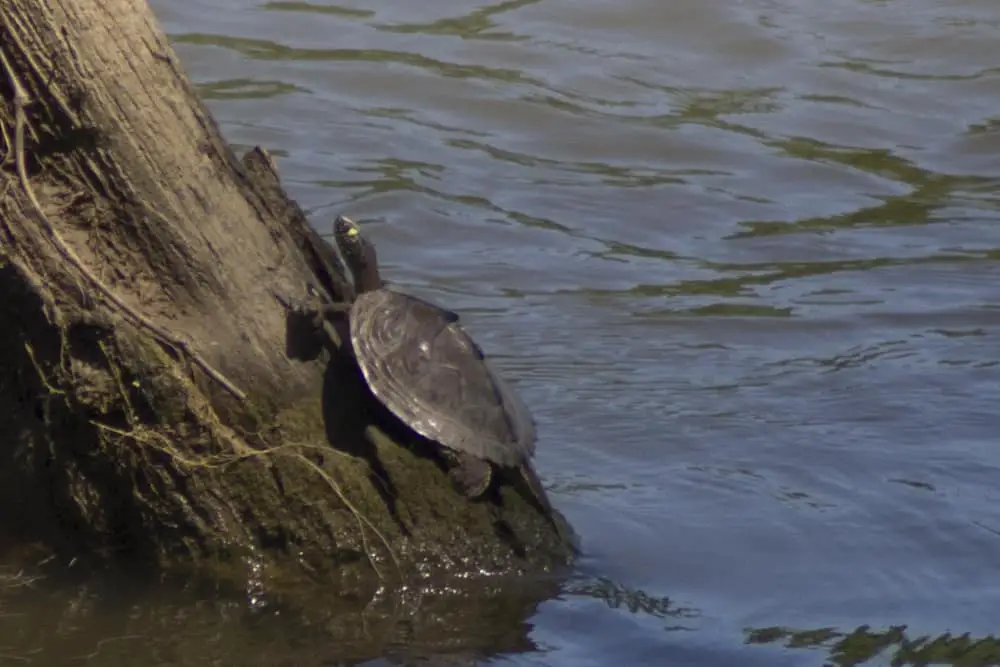
The Sabine Map Turtle is a medium-sized species of aquatic turtle native to the southeastern United States. It has a distinctive olive or brown shell with yellow stripes along its sides and a prominent mark on either side of its head that resembles an “eye”.
Habitat of Guadalupe Spiny Softshell
Sabine Map Turtles are typically found in ponds, lakes, marshes, slow-moving streams and rivers. They prefer habitats with plenty of vegetation for basking in during the day as well as rocks or logs to hide under during the winter months.
Diet of Guadalupe Spiny Softshell
Sabine Map Turtles are omnivorous, meaning they feed on both plants and animals. They typically consume insects, worms, small vertebrates, aquatic vegetation and fruits or vegetables if available.
Reproduction and Life Cycle of the Sabine Map Turtle
Sabine Map Turtles reach sexual maturity around 5 years old and can live up to 25 years in the wild. Breeding usually occurs from spring to early summer and females will lay 3-7 eggs that hatch in late summer or early fall.
20. Southern Painted Turtle (Chrysemys picta dorsalis)
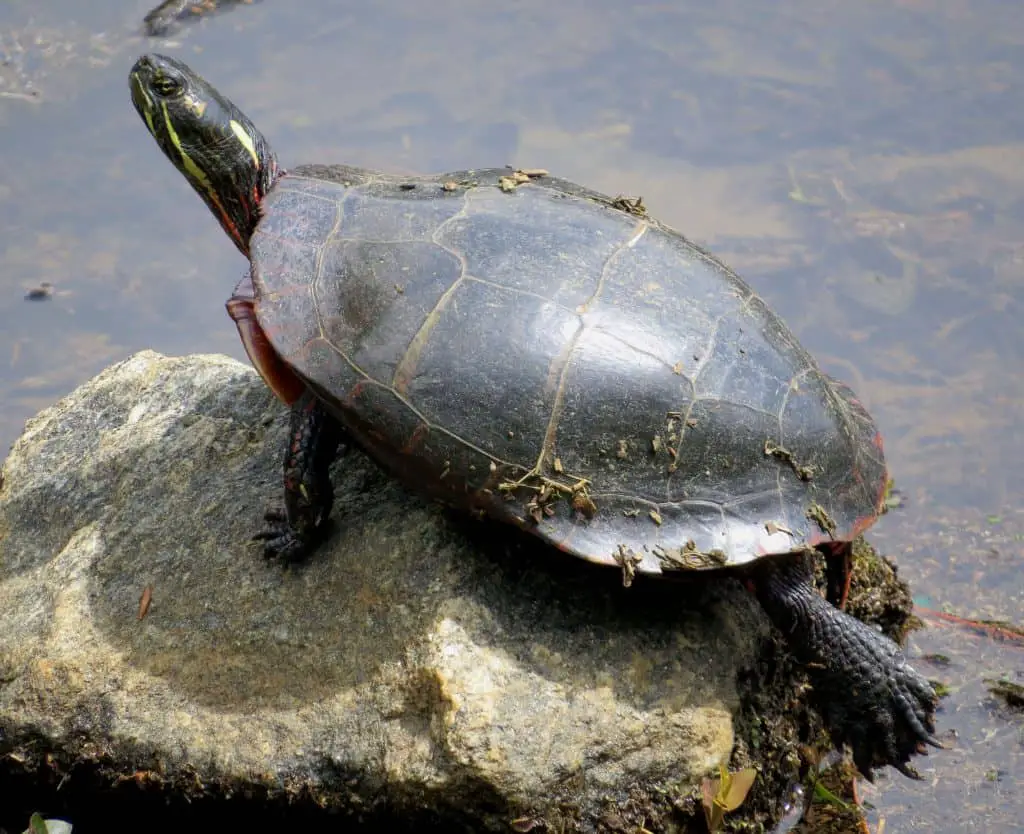
The Southern Painted Turtle is a medium-sized species of aquatic turtle native to the southeastern United States. It has a distinctive olive or brown shell with yellow stripes along its sides and a prominent mark on either side of its head that resembles an “eye”.
Habitat of Southern Painted Turtle
Southern Painted Turtles are typically found in ponds, lakes, marshes, slow-moving streams and rivers. They prefer habitats with plenty of vegetation for basking in during the day as well as rocks or logs to hide under during the winter months.
Diet of Southern Painted Turtle
Southern Painted Turtles are omnivorous, meaning they feed on both plants and animals. They typically consume insects, worms, small vertebrates, aquatic vegetation and fruits or vegetables if available.
Reproduction and Life Cycle of the Southern Painted Turtle
Southern Painted Turtles reach sexual maturity around 4-6 years old and can live up to 30 years in the wild. Breeding usually occurs from spring to early summer and females will lay 3-11 eggs that hatch in late summer or early fall.
21. Texas Diamondback Terrapin (Malaclemys terrapin littoralis)
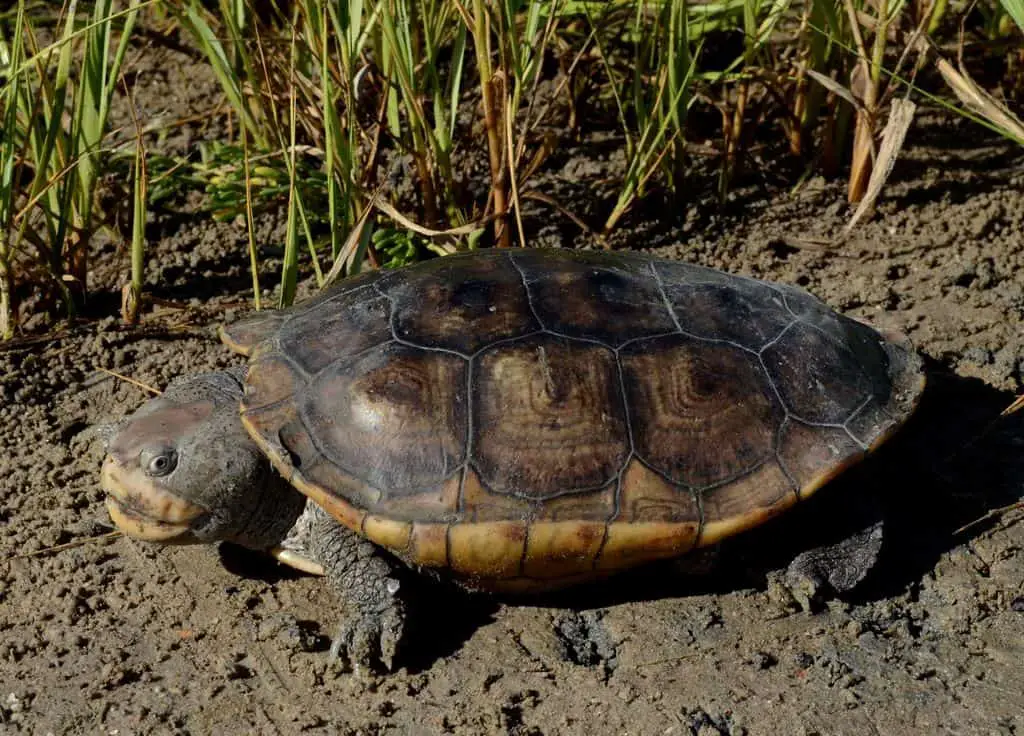
The Texas Diamondback Terrapin is a medium-sized species of aquatic turtle native to the Gulf Coast region of the United States. It has a distinctive gray or brown shell with diamond-shaped markings along its sides and pronounced ridges near its head and tail.
Habitat of Texas Diamondback Terrapin
Texas Diamondback Terrapins are typically found in brackish rivers and shallow coastal waters. They prefer habitats with plenty of vegetation to hide in during the day as well as submerged logs or rocks to rest on during the winter months.
Diet of Texas Diamondback Terrapin
Texas Diamondback Terrapins are omnivorous, meaning they feed on both plants and animals. They typically consume insects, worms, small vertebrates, aquatic vegetation and fruits or vegetables if available.
Reproduction and Life Cycle of the Texas Diamondback Terrapin
Texas Diamondback Terrapins reach sexual maturity around 5-7 years old and can live up to 30 years in the wild. Breeding usually occurs from spring to early summer and females will lay 2-7 eggs that hatch in late summer or early fall.
22. Texas Map Turtle (Graptemys versa)
The Texas Map Turtle is a medium-sized species of aquatic turtle native to the southeastern United States. It has a distinctive dark brown or black shell with yellow lines and markings throughout, giving it a map-like appearance.
Habitat of Texas Map Turtle
Texas Map Turtles are typically found in rivers, streams and backwaters with plenty of vegetation for them to hide in during the day as well as submerged logs or rocks to rest on during the winter months.
Diet of Texas Map Turtle
Texas Map Turtles are omnivorous, meaning they feed on both plants and animals. They typically consume insects, worms, small vertebrates, aquatic vegetation and fruits or vegetables if available.
Reproduction and Life Cycle of the Texas Map Turtle
Texas Map Turtles reach sexual maturity around 4-6 years old and can live up to 30 years in the wild. Breeding usually occurs from spring to early summer and females will lay 3-11 eggs that hatch in late summer or early fall.
23. Texas River Cooter (Pseudemys texana)
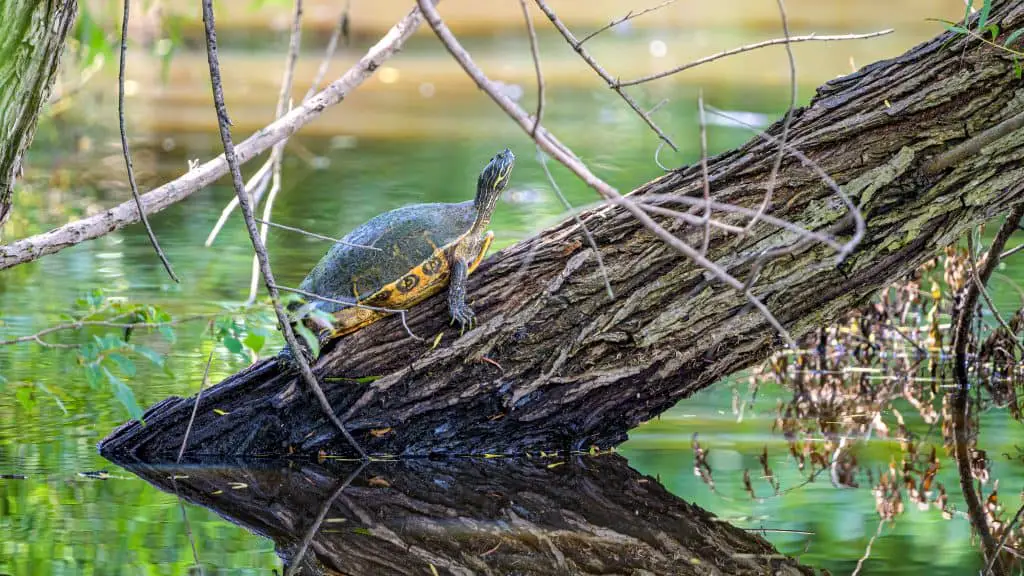
The Texas River Cooter is a medium-sized species of aquatic turtle native to the southeastern United States. It has an olive and yellowish shell with small yellow spots along its sides and ridges near its head and tail.
Habitat of Mississippi Mud Turtle
Texas River Cooters are typically found in rivers, streams and backwaters with plenty of vegetation for them to hide in during the day as well as submerged logs or rocks to rest on during the winter months.
Diet of Mississippi Mud Turtle
Texas River Cooters are omnivorous, meaning they feed on both plants and animals. They typically consume insects, worms, small vertebrates, aquatic vegetation and fruits or vegetables if available.
Reproduction and Life Cycle of the Texas River Cooter
Texas River Cooters reach sexual maturity around 3-5 years old and can live up to 20 years in the wild. Breeding usually occurs from spring to early summer and females will lay 2-7 eggs that hatch in late summer or early fall.
24. Texas Spiny Softshell (Apalone spinifera emoryi)
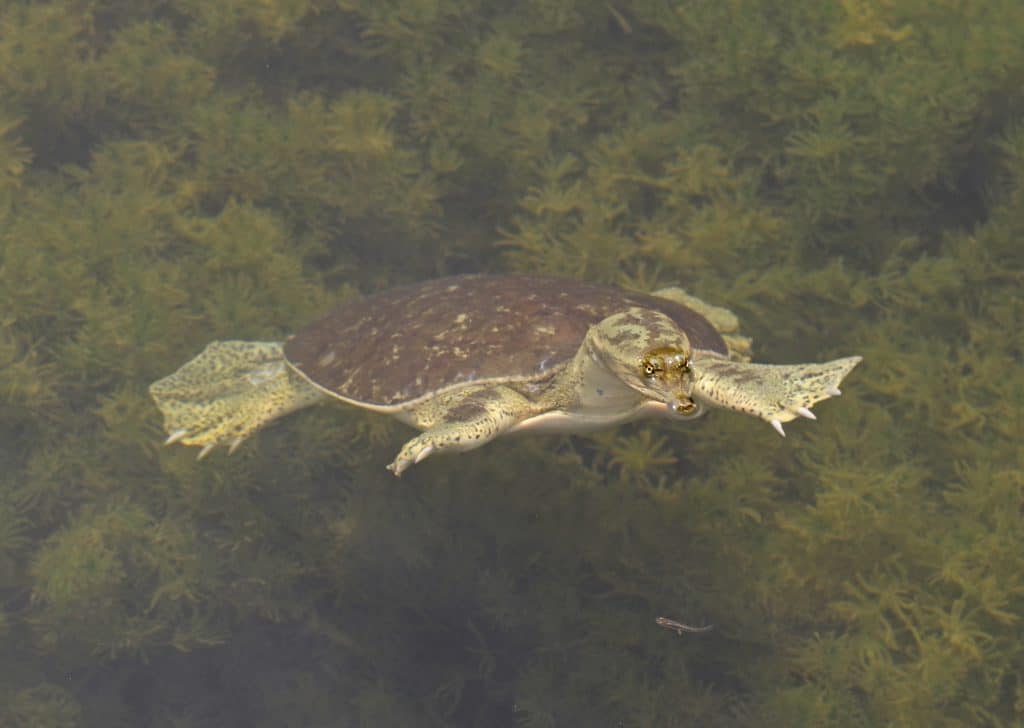
The Texas Spiny Softshell is a medium-sized species of aquatic turtle native to the southeastern United States. It has a distinctive light brown or olive shell with dark spots and spines along its edge.
Habitat of Texas Spiny Softshell
Texas Spiny Softshells are typically found in rivers, streams and backwaters with plenty of vegetation for them to hide in during the day as well as submerged logs or rocks to rest on during the winter months.
Diet of Texas Spiny Softshell
Texas Spiny Softshells are omnivorous, meaning they feed on both plants and animals. They typically consume insects, worms, small vertebrates, aquatic vegetation and fruits or vegetables if available.
Reproduction and Life Cycle of the Texas Spiny Softshell
Texas Spiny Softshells reach sexual maturity around 4-6 years old and can live up to 25 years in the wild. Breeding usually occurs from spring to early summer and females will lay 2-8 eggs that hatch in late summer or early fall.
25. Texas Tortoise (Gopherus berlandieri)
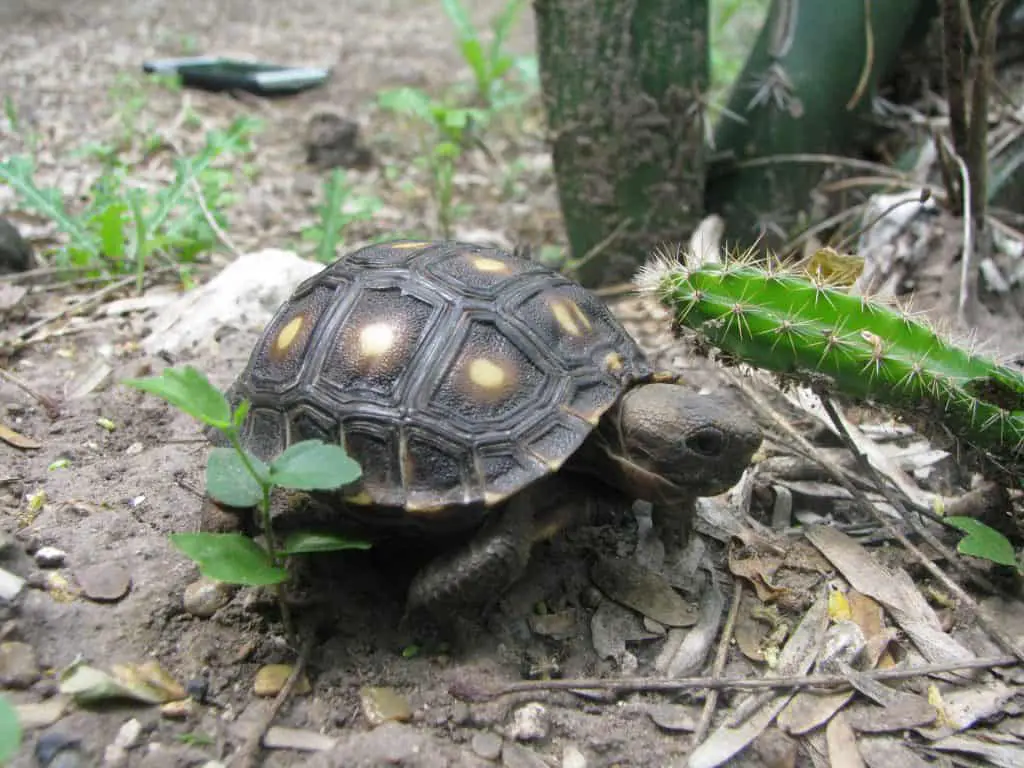
The Texas Tortoise is a medium-sized species of terrestrial turtle native to the southwestern United States. It has a dark brown or black shell with yellow stripes along its sides and front legs covered in scales.
Habitat of the Texas Tortoise
Texas Tortoises are typically found in arid, rocky areas with plenty of vegetation to hide in during the day as well as burrows or crevices to rest in during the winter months.
Diet of the Texas Tortoise
Texas Tortoises are omnivorous, meaning they feed on both plants and animals. They typically consume insects, worms, small vertebrates, flowers, leaves, fruits and vegetables if available.
Reproduction and Life Cycle of the Texas Tortoise
Texas Tortoises reach sexual maturity around 5-7 years old and can live up to 50 years in the wild. Breeding usually occurs from spring to early summer and females will lay 2-6 eggs that hatch in late summer or early fall.
26. Three-toed Box Turtle (Terrapene carolina triunguis)
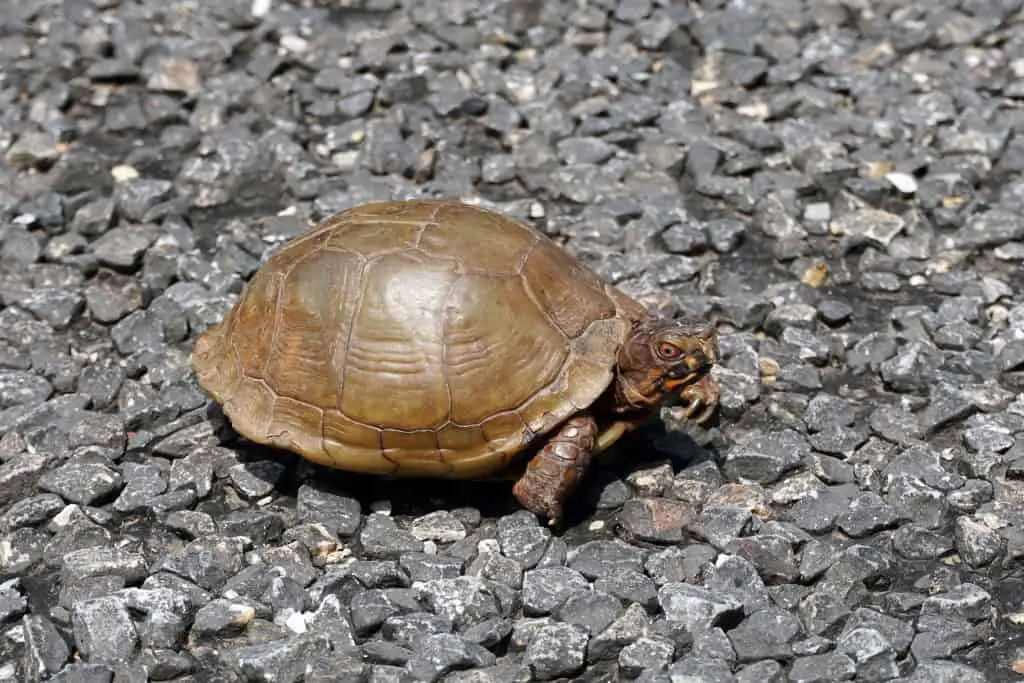
The Three-toed Box Turtle is a medium-sized species of aquatic turtle native to the southeastern United States. It has an olive and yellowish shell with three distinct toes on each foot and striped markings along its sides and head.
Habitat of Three-toed Box Turtle
Three-toed Box Turtles are typically found in moist forests, fields or near wetlands where they can find plenty of vegetation for them to hide in during the day as well as logs, rocks or other hiding spots to rest on during the winter months.
Diet of Three-toed Box Turtle
Three-toed Box Turtles are omnivorous, meaning they feed on both plants and animals. They typically consume insects, worms, small vertebrates, aquatic vegetation and fruits or vegetables if available.
Reproduction and Life Cycle of the Three-toed Box Turtle
Three-toed Box Turtles reach sexual maturity around 4-6 years old and can live up to 50 years in the wild. Breeding usually occurs from spring to early summer and females will lay 2-7 eggs that hatch in late summer or early fall.
27. Western Chicken Turtle (Deirochelys reticularia miaria)

The Western Chicken Turtle is a medium-sized species of aquatic turtle native to the southwestern United States. It has a dark brownish or blackish shell with yellow stripes along its sides and head and small, spiny projections on its carapace.
Habitat of the Western Chicken Turtle
Western Chicken Turtles are typically found in ponds, marshes or shallow streams where they can find plenty of vegetation for them to hide in during the day as well as logs, rocks or other hiding spots to rest on during the winter months.
Diet of the Western Chicken Turtle
Western Chicken Turtles are omnivorous, meaning they feed on both plants and animals. They typically consume insects, worms, small vertebrates, aquatic vegetation and fruits or vegetables if available.
Reproduction and Life Cycle of the Western Chicken Turtle
Western Chicken Turtles reach sexual maturity around 4-6 years old and can live up to 30 years in the wild. Breeding usually occurs from late spring to early summer and females will lay 2-7 eggs that hatch in late summer or early fall.
28. Western Painted Turtle (Chrysemys picta bellii)

The Western Painted Turtle is a medium-sized species of aquatic turtle native to the western United States. It has a smooth, oval shell with yellow and red stripes along its sides and head and a long neck.
Habitat of the Western Painted Turtle
Western Painted Turtles are typically found in ponds, marshes or shallow streams where they can find plenty of vegetation for them to hide in during the day as well as logs, rocks or other hiding spots to rest on during the winter months.
Diet of the Western Painted Turtle
Western Painted Turtles are omnivorous, meaning they feed on both plants and animals. They typically consume insects, worms, small vertebrates, aquatic vegetation and fruits or vegetables if available.
Reproduction and Life Cycle of the Western Painted Turtle
Western Painted Turtles reach sexual maturity around 4-6 years old and can live up to 50 years in the wild. Breeding usually occurs from spring to early summer and females will lay 2-7 eggs that hatch in late summer or early fall.
29. Western Spiny Softshell (Apalone spinifera hartwegi)
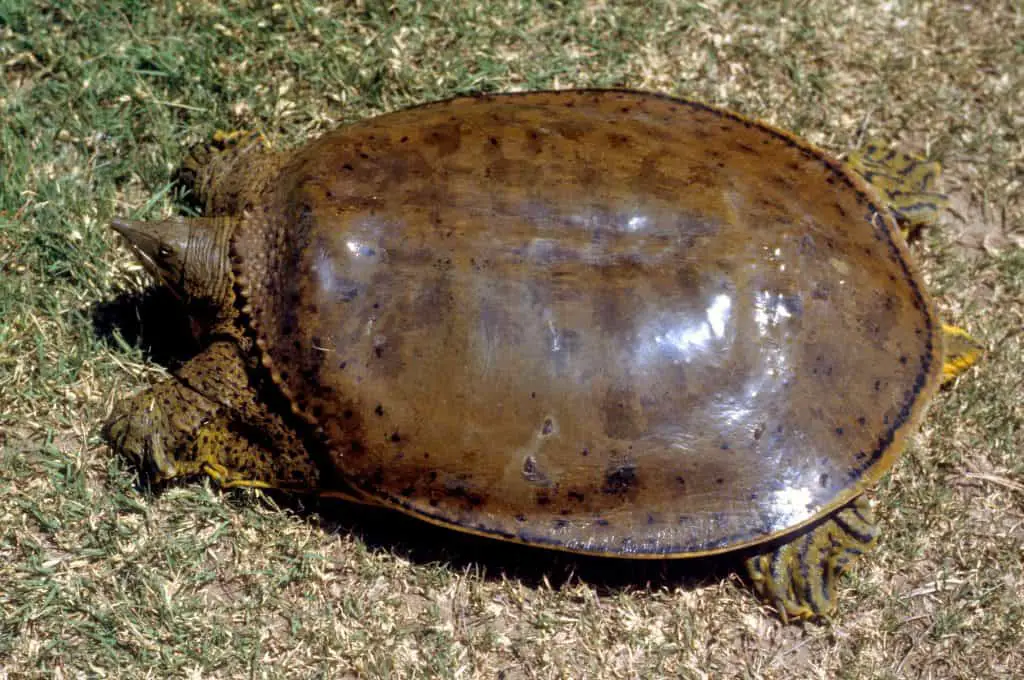
The Western Spiny Softshell is a medium-sized species of aquatic turtle native to the southwestern United States. It has an olive-brown carapace with yellowish stripes and spines along its edges, and white spots on its head and neck.
Habitat of the Western Spiny Softshell
Western Spiny Softshells are typically found in ponds, marshes or shallow streams where they can find plenty of vegetation for them to hide in during the day as well as logs, rocks or other hiding spots to rest on during the winter months.
Diet of Western Spiny Softshell
Western Spiny Softshells are omnivorous, meaning they feed on both plants and animals. They typically consume insects, worms, small vertebrates, aquatic vegetation and fruits or vegetables if available.
Reproduction and Life Cycle of the Western Spiny Softshell
Western Spiny Softshells reach sexual maturity around 4-6 years old and can live up to 25 years in the wild. Breeding usually occurs from late spring to early summer and females will lay 2-7 eggs that hatch in late summer or early fall.
30. Yellow Mud Turtle (Kinosternon flavescens flavescens)
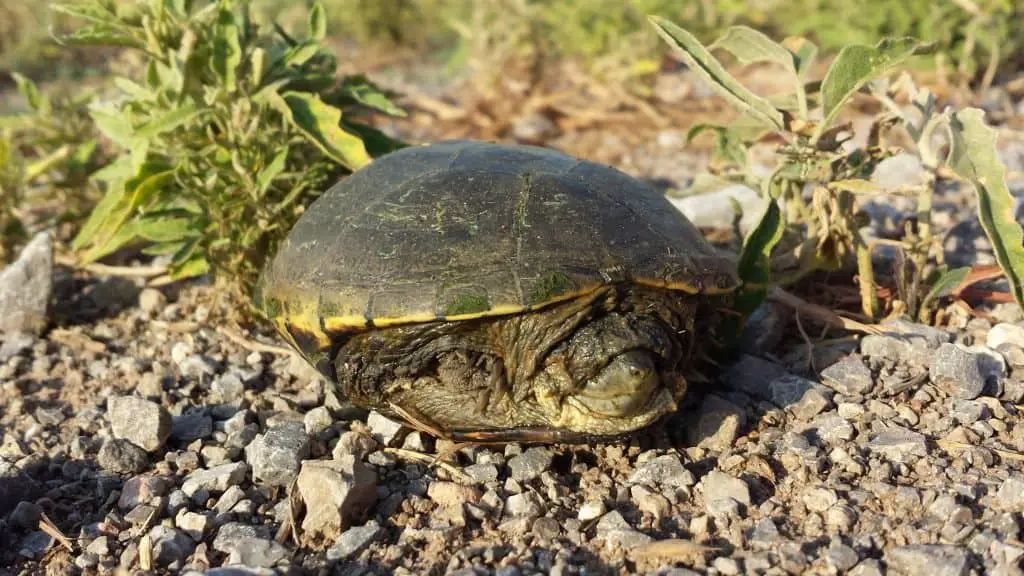
The Yellow Mud Turtle is a small aquatic turtle native to the southeastern United States. It has an olive-brown carapace with yellowish stripes and yellow spots on its head and neck.
Habitat of the Yellow Mud Turtle
Yellow Mud Turtles are typically found in ponds, marshes or shallow streams where they can find plenty of vegetation for them to hide in during the day as well as logs, rocks or other hiding spots to rest on during the winter months.
Diet of Yellow Mud Turtle
Yellow Mud Turtles are omnivorous, meaning they feed on both plants and animals. They typically consume insects, worms, small vertebrates, aquatic vegetation and fruits or vegetables if available.
Reproduction and Life Cycle of the Yellow Mud Turtle
Yellow Mud Turtles reach sexual maturity around 4-6 years old and can live up to 25 years in the wild. Breeding usually occurs from late spring to early summer and females will lay 2-7 eggs that hatch in late summer or early fall.




Leave a Reply